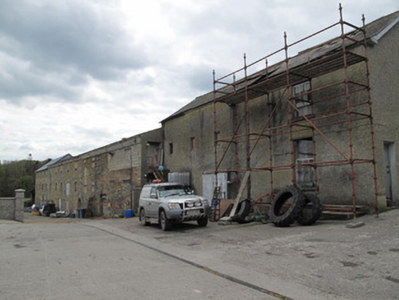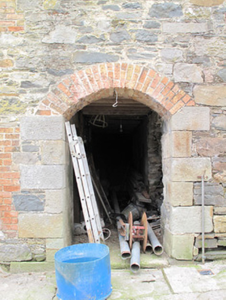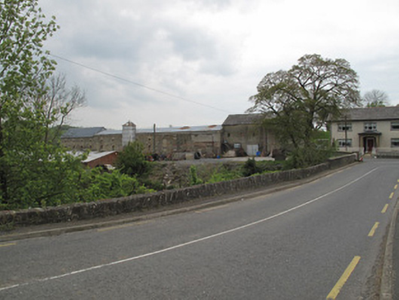Survey Data
Reg No
41401239
Rating
Regional
Categories of Special Interest
Archaeological, Architectural, Technical
Original Use
Mill (water)
Historical Use
Kiln
In Use As
Outbuilding
Date
1715 - 1850
Coordinates
253798, 325534
Date Recorded
18/05/2012
Date Updated
--/--/--
Description
Corn mill complex, built c.1829 with later additions and possibly some fabric of c.1718, comprising three blocks, southern being four-bay three-storey grain store, middle being multiple-bay three-storey double kiln, and northern slightly recessed from principal elevations. Associated mill, which stood at river bank, to east of surviving buildings, no longer extant. Pitched roofs, slate to northern block, with terracotta ridge tiles and timber bargeboards, and corrugated-metal coverings to others. Harl-rendered walls to northern block, and coursed rubble stone elsewhere, with some concrete block-work and brickwork to north end of front of middle block. Dressed stone block-and-start quoins to south and rear elevations. Square-headed and camber-headed window openings, mainly blocked up or closed with steel sheeting. Two six-over-six pane timber sliding sash windows to northern end of front elevation of northern block. Steel shutters to window openings to rear. Gauged red brick segmental-arch vehicular door openings to front of middle block, with corrugated-metal doors. Gauged red brick round-headed door opening to front, with dressed stone surrounds. Gauged red brick segmental-headed door opening to south elevation. Concrete walls to river to east, forming wheel-pit.
Appraisal
Although the related mill building is no longer extant, the scale of these kiln and store buildings are indicative of the status and output of the mill, making it an important feature on the historical industrial landscape. The building remains an attractive feature, with red brick details forming a pleasing tonal and textural contrast with the stone of the walls. The mill has a long history at this site, with earliest references to Analore Mill in the late seventeenth century.





